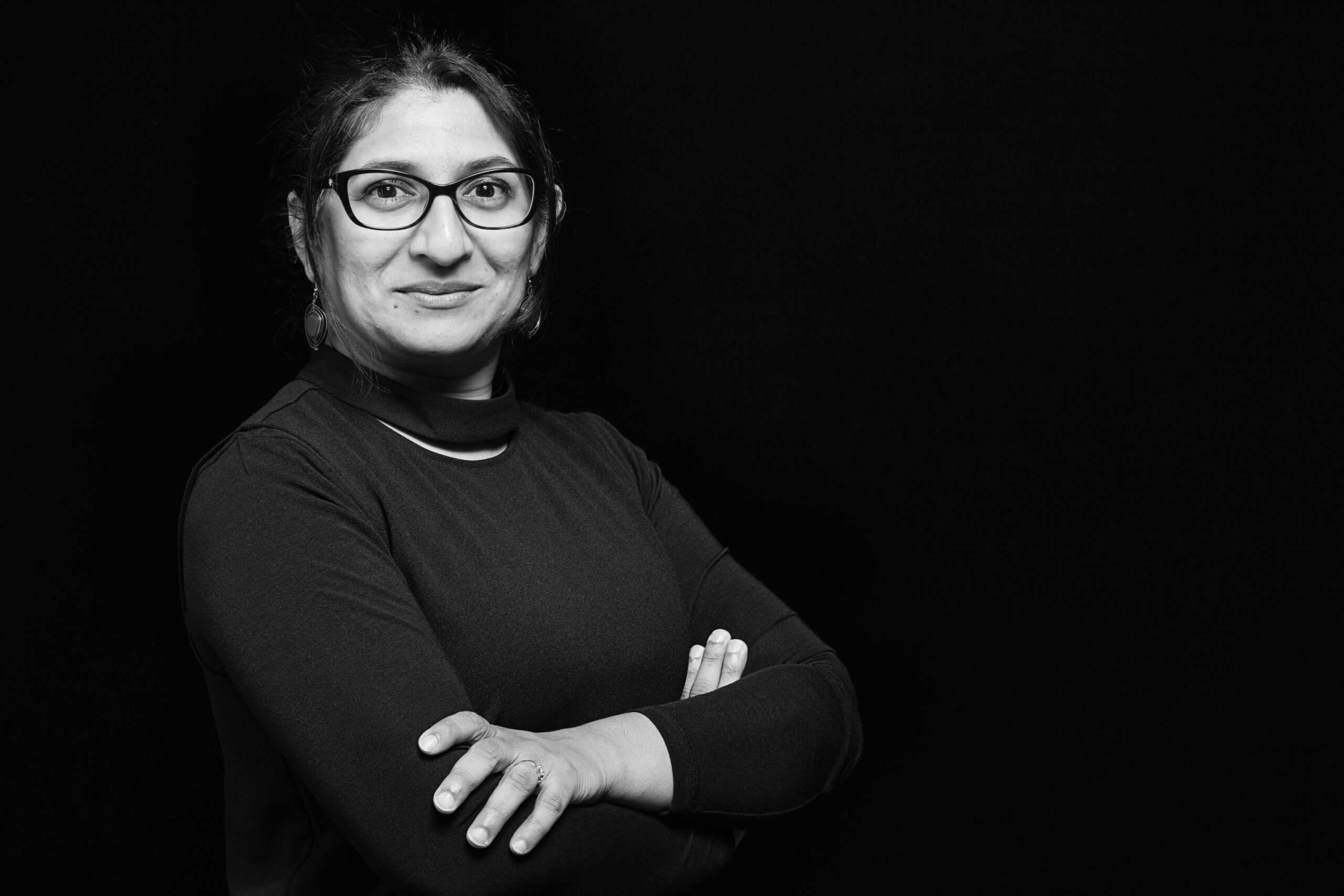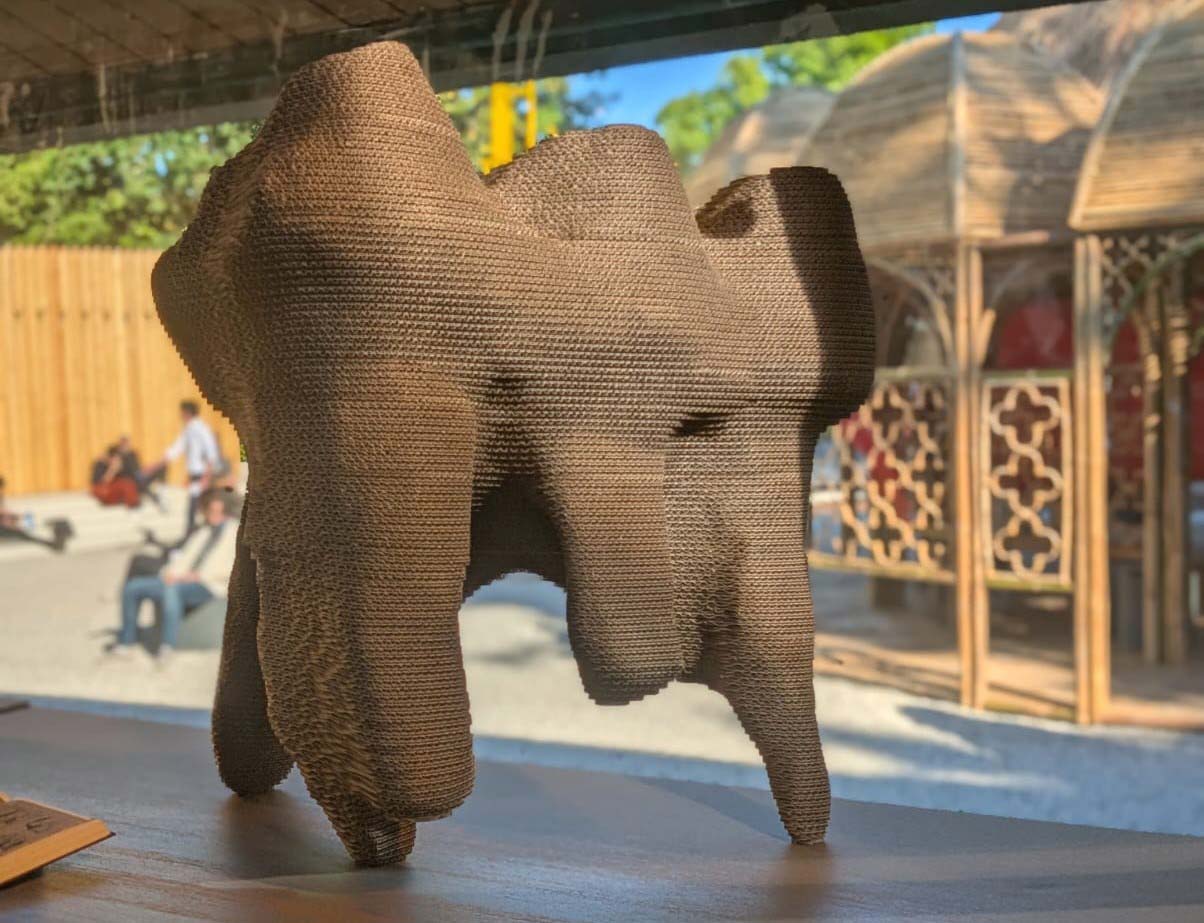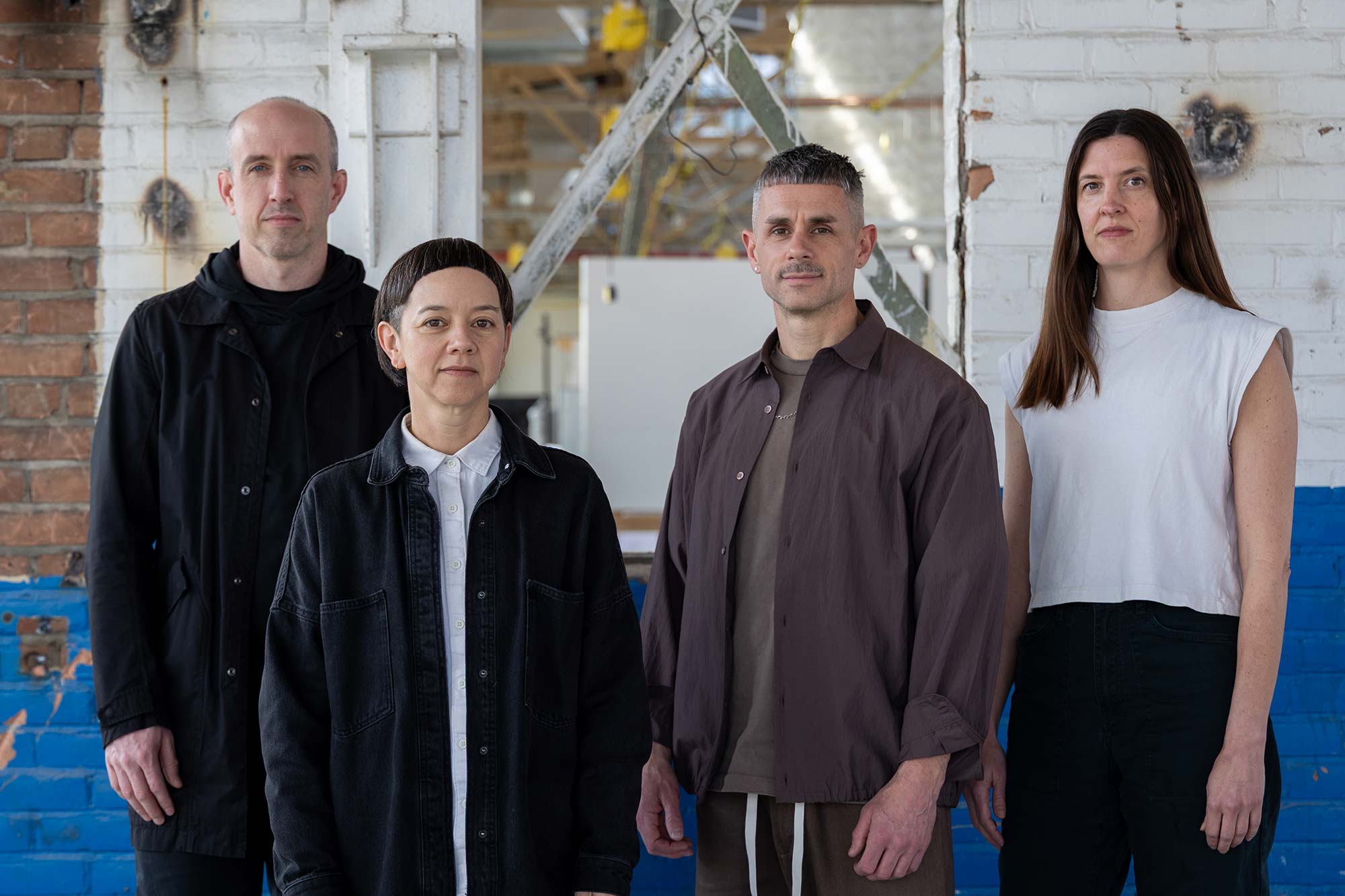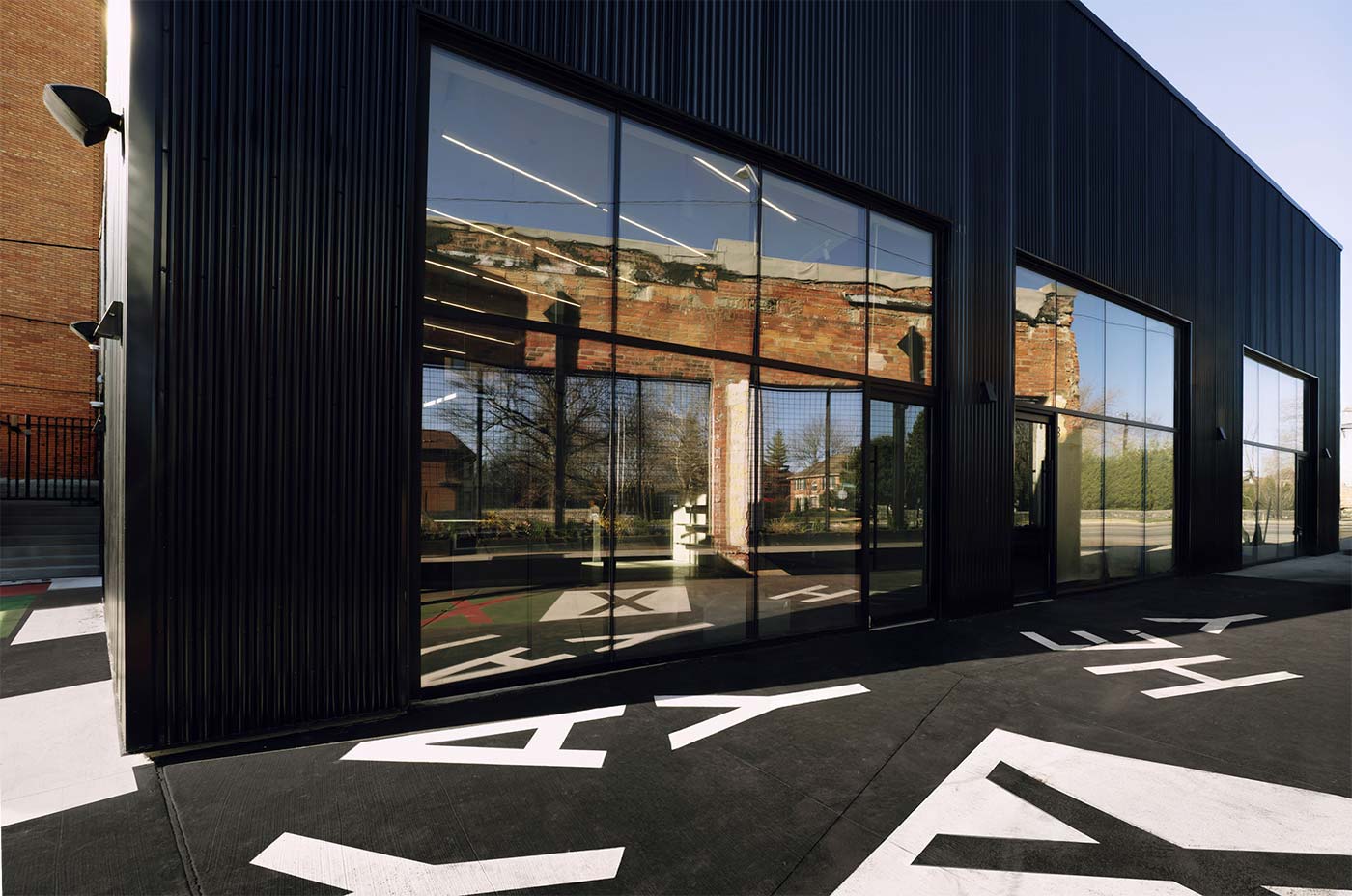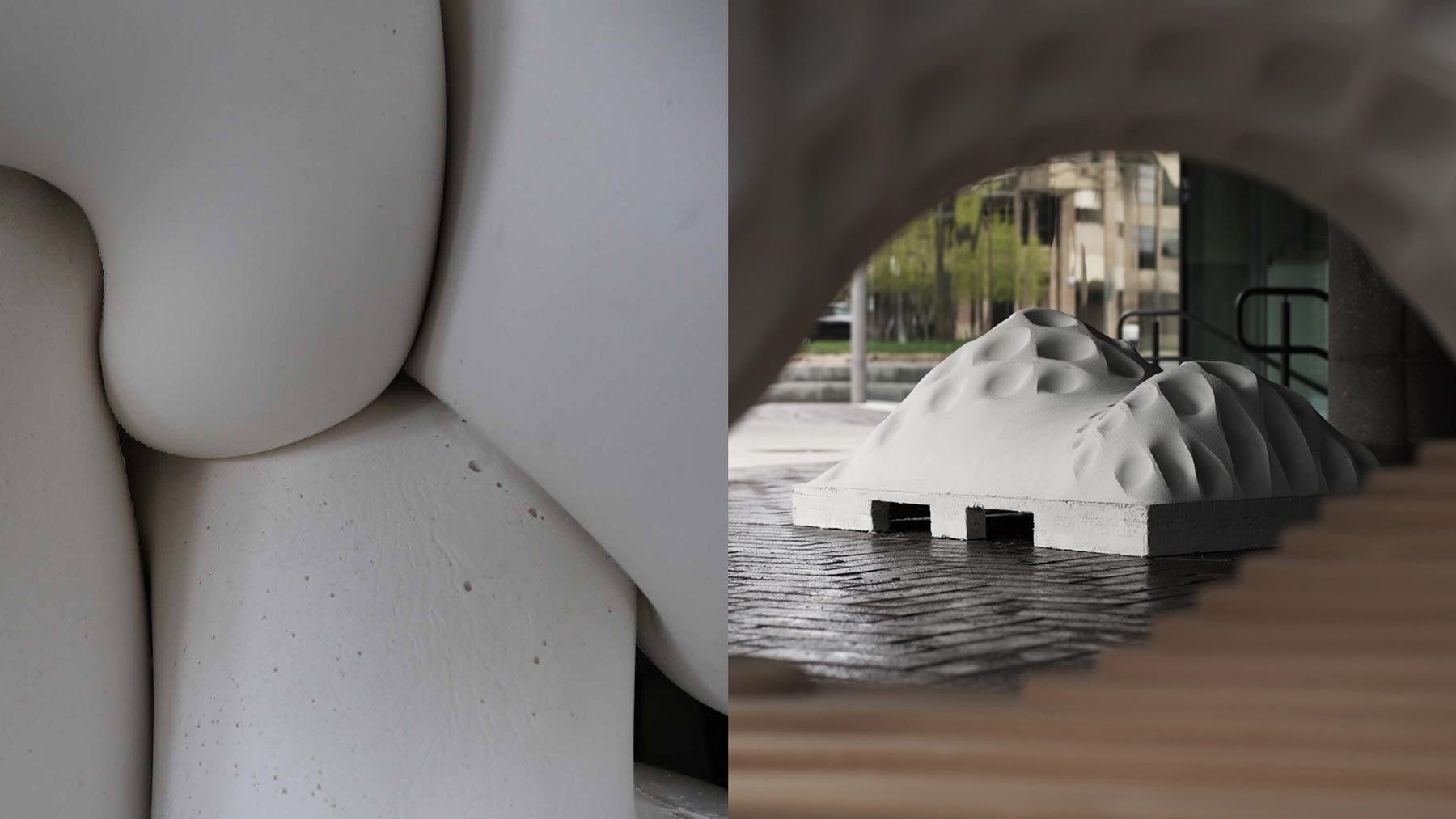
Taubman College Demonstrates Continued Leadership at ACADIA 2019
The recent international conference for the Association of Computer Aided Design in Architecture (ACADIA), which was held in Austin, TX, featured numerous moments of recognition for Taubman College and its Master of Science in Digital Materials and Technology (MS_DMT) program.
ACADIA is an international network of digital design researchers and professionals who facilitate critical investigations into the role of computation in architecture, planning, and building science, encouraging innovation in design creativity, sustainability, and education. It is considered to be the leading organization for professionals in the field and has long served as a means of engagement for Taubman College faculty, students, and alumni.
At the conference, Catie Newell, associate professor of architecture and director of the MS_DMT program, accepted ACADIA’s 2019 Innovative Academic Program Award of Excellence for the program, on behalf of Taubman College and the DMT faculty. Other faculty who teach in the program are Arash Adel, Sean Ahlquist, Matias del Campo, Wes McGee, Mania Aghaei Meibodi, Mark Meier, Tsz Yan Ng, Kathy Velikov, and Glenn Wilcox.
“The Taubman College Master of Science in Digital and Material Technologies has emerged as a leader in the education of the next generation of digital designers and researchers in the field,” the jury noted when announcing the award. “The faculty involved in the program have been at the forefront of academic and research innovation.”
The MS_DMT is an intensive 10-month post-professional degree that invests in the technologies, materials, and production logics that are most drastically shaping and challenging our built world and its respective industries. Joining digital technologies to material systems as a cohesive framework of study, the MS_DMT’s project-based research and training is led by faculty innovators in the college’s industry-leading digital fabrication lab, the FABLab. Through direct-hands-on engagement with technology and materials, students explore the design theories and methodologies poised to have disruptive effects on the built world.
“We are honored to be recognized by the ACADIA community, where we hold our strongest ties to a larger community of scholarship and experimentation. This award highlights the tremendous research and teaching work done by the very talented and collaborative faculty cohort that clearly leads by example,” said Newell.
Also at ACADIA 2019, Kathy Velikov, associate professor of architecture, accepted a nomination to serve a second term as the organization’s president. Velikov was first elected to ACADIA’s board of directors in 2016 and was elected president in 2017. She is a founding partner of the research-based practice RVTR, which serves as a platform for exploration and experimentation in the intertwinements between architecture, the environment, technology, and sociopolitics.
“I would best describe ACADIA as a ‘community of practice,’” Velikov said. “It is a dynamic and continually evolving community, with the annual conference being a forum for sharing early work-in-progress explorations, experiments, iterations, and prototypes that operate at the forefront of computational design.”
In addition, Mania Aghaei Meibodi, assistant professor of architecture who joined Taubman College from ETH in September, presented about her work with the pioneering construction method Smart Slab, which uses 3D-printed formwork for casting and spraying concrete in geometrically complex shapes.
As in the past, ACADIA 2019 offered Taubman College students the opportunity to network and hear from leading researchers and practitioners in the field of computer-aided design. The college sees it as a priority to introduce the students to the ACADIA community, and the MS_DMT program helps to fund them to attend the annual conference — one of the highlights of the fall semester. Faculty also encourage students to submit their capstone work to the conference, and many of them return to present work and continue to contribute to the ACADIA community after graduation. The work presented at this year’s ACADIA conference was done in the Winter 2019 Arch 739: MSDMT Capstone Studio, Investigations in Precast Concrete. The studio was led by Associate Professor Glenn Wilcox and funded by the PCI Institute with additional funding from Rackham.
Misri Patel, M.S. ’19, attended the 2018 ACADIA conference in Mexico City as a student, and the 2019 conference as a presenter. “It was exciting to be an active contributor this year, seeing our work reviewed by people who have taught us and whom we really admire,” she said.
Under the ACADIA 2019 theme “Ubiquity & Autonomy,” 2019 graduates of the MS_DMT program presented the following work:
Kneucrete: CNC Knits for Programmable Hybrid Formworks
Research team: Shan Chun Wen, Maryam AlHajri, and Misri Patel
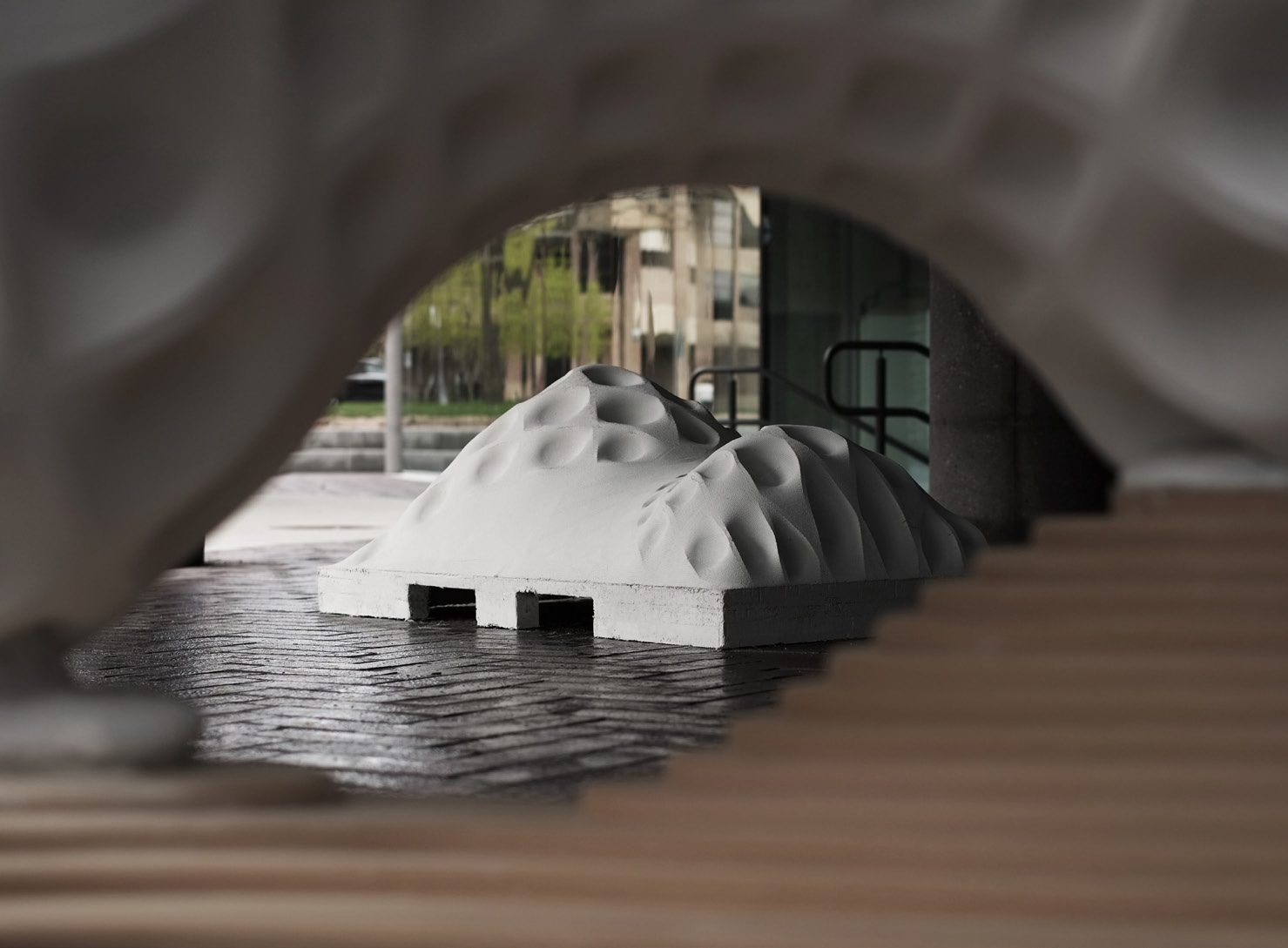
Kneucrete: CNC Knits for Programmable Hybrid Formworks
The development and realization of this prototype focused on exploring the capacity of different stitch structures and integration of stitch lengths at a cellular level to influence the overall form and topology of the surface. The objective was to evaluate the feasibility of CNC knitted fabric formwork system for the construction of such a large and complex structure with constraints. Knitted textiles offer several advantages, such as precise draping qualities and the possibility to locally customize material properties which can seamlessly integrate openings. The system aims at using knitted fabrics with layers of high strength glass fiber reinforced concrete to retain the form for a structurally stable system. The system’s feasibility is explained and explored through the design and analysis of various small scale studies.
Precise Imprecision: Flexible Construction with Robotic Fabric Formwork
Research team: Ester Hong-Fen Lo, Leon Yi-Liang Ko
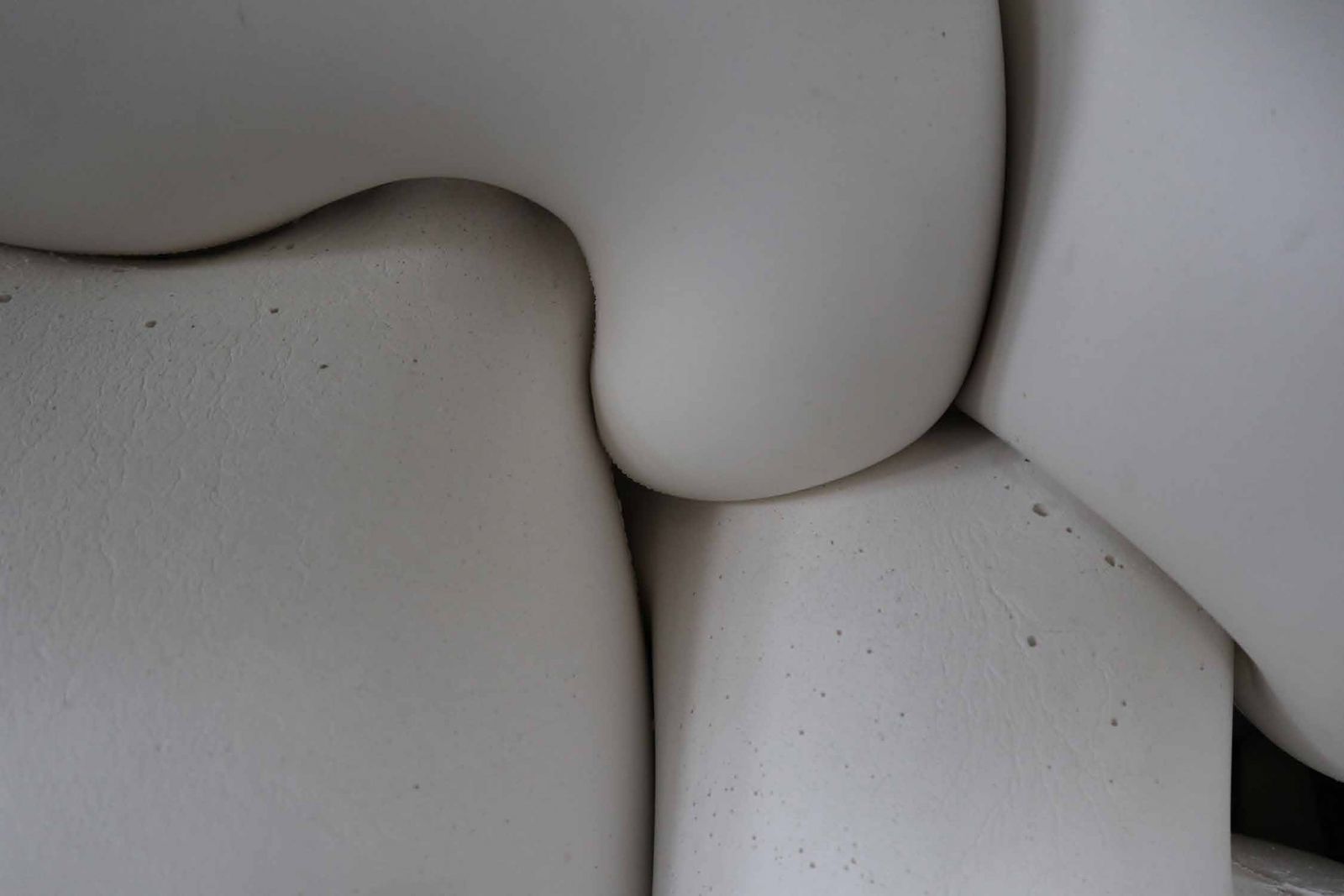
Precise Imprecision: Flexible Construction with Robotic Fabric Formwork
To a designer, fabric can be flexible, efficient mold. Mark West’s traditional fabric formwork produces many beautiful architecture objects. Form Found Design uses a robot to control fabric mold and gets different iterations. However, they both have disadvantages. People can’t get enough shaping control from traditional type. They also spend time to deal with joint connection’s deformation issue and geometry limitations from robotic fabric mold. This project, “Precise Imprecision,” defines a new technique through stack casting fabric mold by robots and humans.





